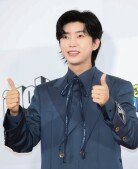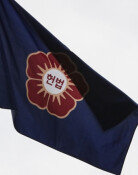Relationship between three-legged crow in Goguryeo’s mural and football team’s emblem
Relationship between three-legged crow in Goguryeo’s mural and football team’s emblem
Posted September. 16, 2020 07:32,
Updated September. 16, 2020 07:32


Choi Kyung-won, CEO of Hyun Design Research Lab., mentioned comments made by a foreign friend a long time ago after the two visited a museum showcasing the relics of traditional Korean culture in the preface of his new book titled “Aesthetics of Korean Wave,” which boldly breaks a taboo.
Choi says he was able to see the intrinsic values of subjects only after getting himself rid of a favorably biased perspective. Choi who majored in industrial design at the College of Fine Arts of Seoul National University began to analyze the design of Korea’s traditional relics since graduate school.
“Values about design in the South Korean society are yet to break free from the boundaries introduced from the U.S. in the industrialization period of the 1960s. The roots and essence of design is life, not industry nor art. Plain earthenware from Three Han and portable wood-burning stoves made in iron from Goguryeo, however, have clear design elements revealing the life and aesthetical depth of these traditional societies.”
The lid of earthenware from the Three Han period features a duck-shaped handle simplified into a geometrical shape. “The simplified design is not the result of the lack of skills to make it more detailed and realistic. Molding a geographical shape that is clean and sophisticated is a lot more difficult than it seems,” said Choi. “Such a shape provides an insight into the cultural and economic level of the traditional society where social classes that consumed such a high degree of abstractness existed.”
His new book features hand-drawn miniature paintings that show how the three-legged crow in Goguryeo’s mural was reflected in the emblem design of a modern football team and how Korea’s bronze dagger, individual parts of which were separately produced with an emphasis on curves, is different from a solid bronze dagger of other countries.
Choi showcases textile items with a design reflecting the patterns found in embroidery and folk paintings of the Joseon Dynasty based on study materials. He plans to expand to furniture and other decorative items. “Mainstream design in South Korea – both in academia and industry – is still stuck in the old framework of the Bauhaus of the industrialization period,” he says. “I can’t deny that I often feel lonely in my voluntary efforts to find the design roots of the traditional Korean culture. However, the moments in which I encounter the hidden design elements of Korea’s traditional cultural assets bring enough joy and pleasure to compensate for the loneliness and more.”
Taek Kyoon Sohn sohn@donga.com
Headline News
- Med professors announce intention to leave hospitals starting Thursday
- Bridge honoring Sgt. Moon Jae-sik unveiled in Pennsylvania
- Chief of Staff Chung tells presidential secretaries to stay away from politics
- US FTC bans noncompete agreements
- N. Korea launches cyberattacks on S. Korea's defense companies







